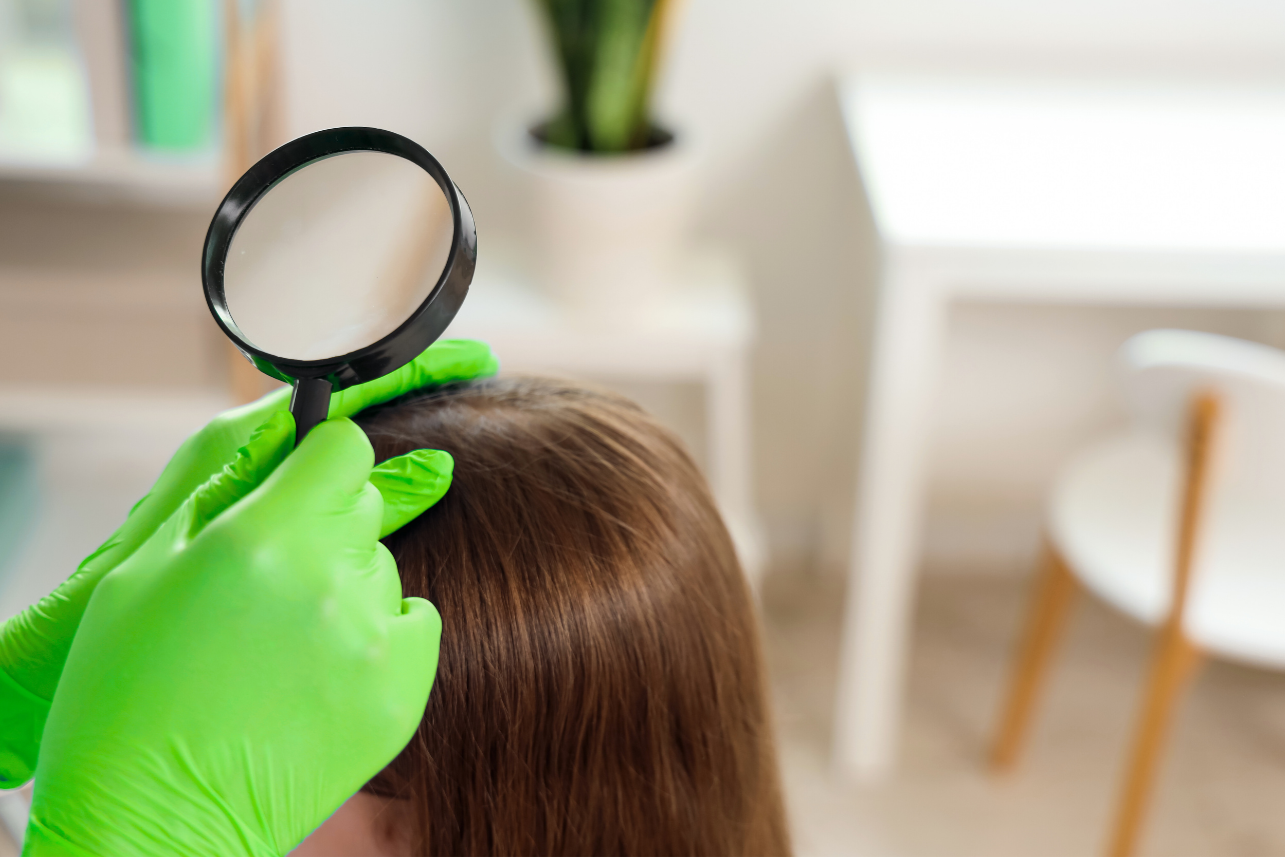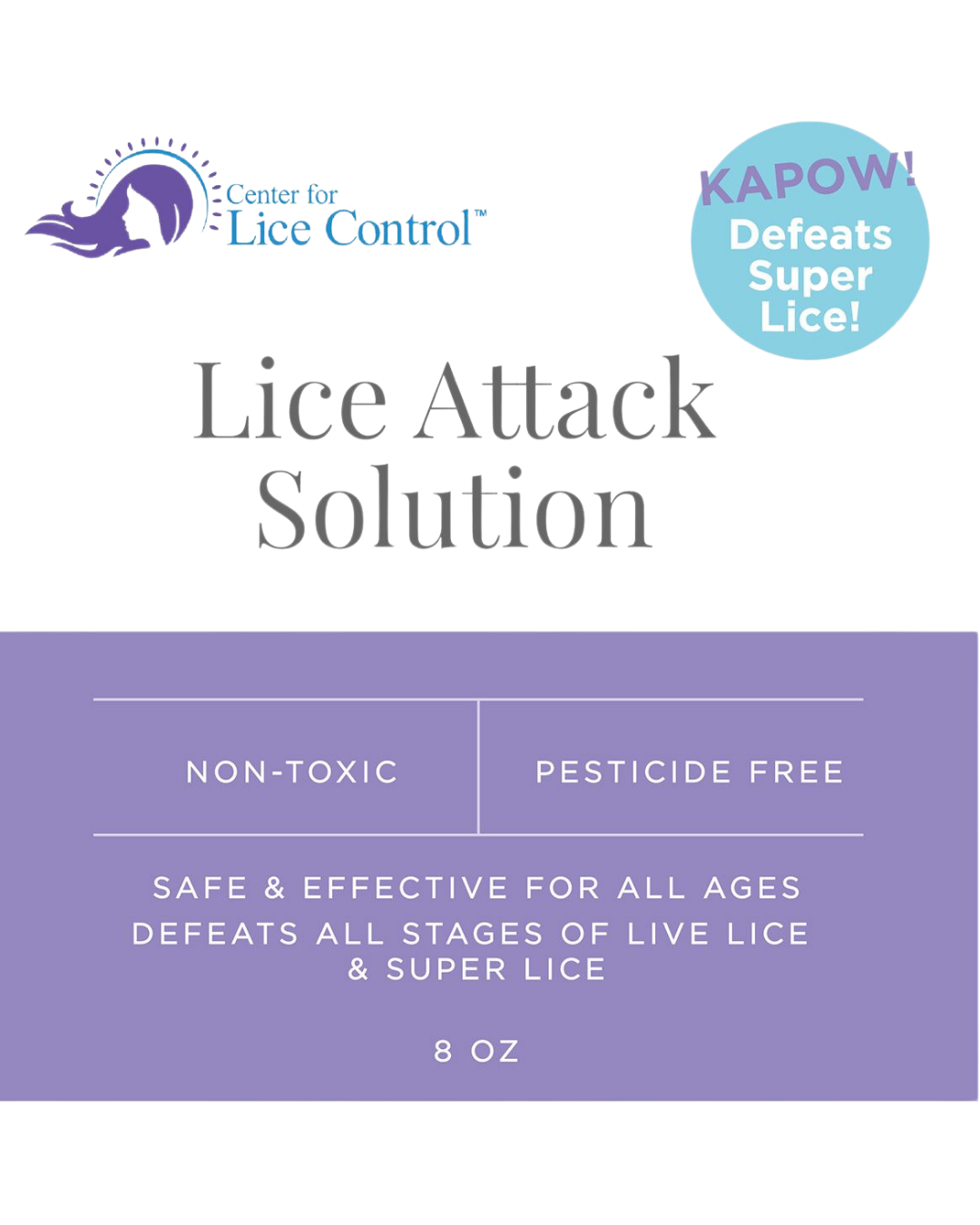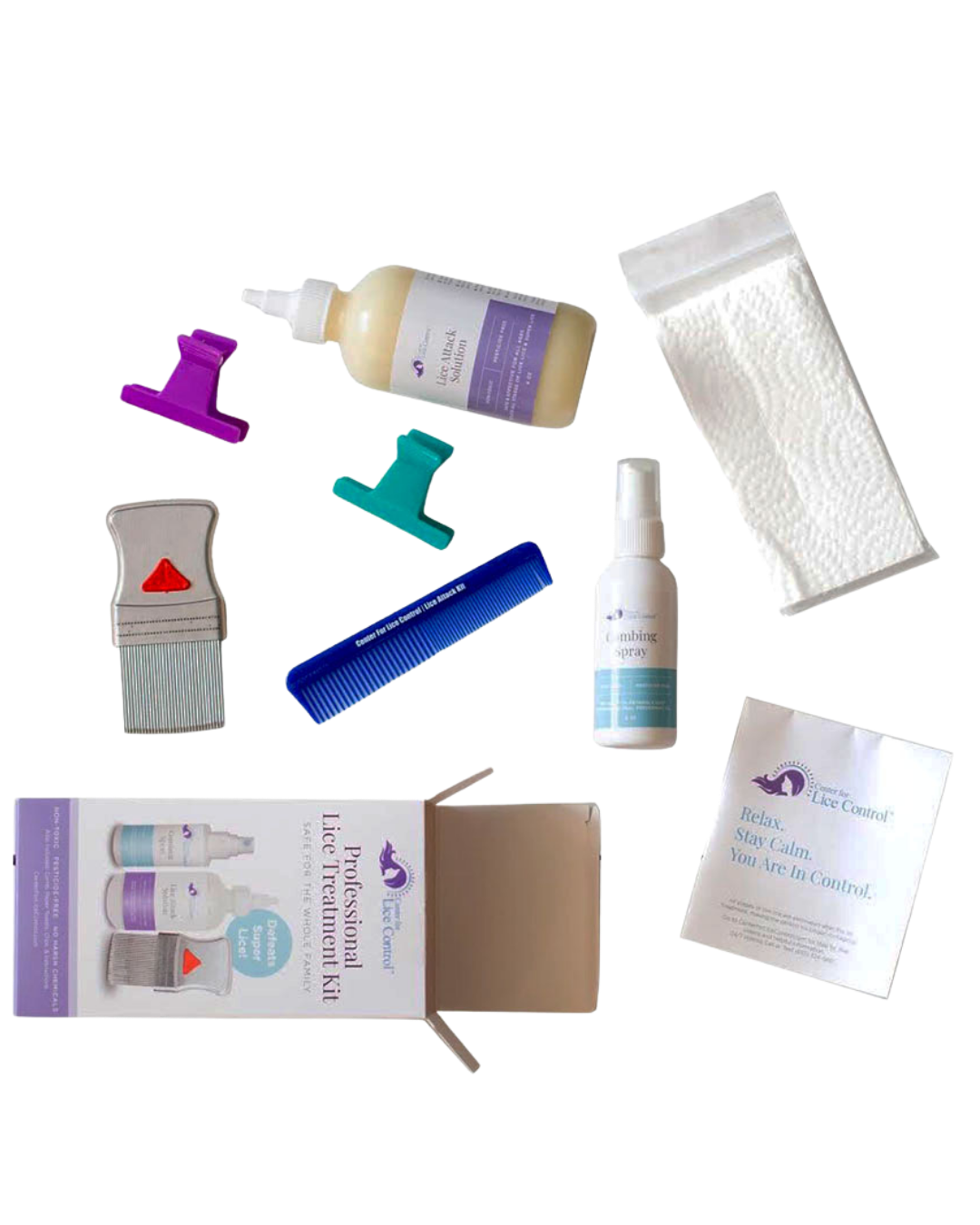Steps of a proper head check
Regular head checks are the best way to catch lice early and prevent them from spreading. Whether you’re a parent, teacher, or caregiver, following these simple steps ensures a thorough and effective screening.
-
Choose a well-lit space; natural sunlight or a bright fluorescent light works best. Have a fine-tooth louse comb, paper towels, and a spray bottle of water (to lightly dampen hair) ready.
-
Divide the hair into small sections using clips or ties. This helps you see the scalp clearly and check every strand from root to tip.
-
Starting at the scalp, use the lice comb to examine each section. Look for live lice (tiny, moving insects) and nits (small oval eggs) attached near the base of the hair shaft, especially around the ears and nape of the neck.
-
During an active infestation, repeat head checks every 2–3 days. This helps catch any newly hatched lice before they mature and lay more eggs.
Helpful Tip:
Consistency is key! Even after treatment, continue checking weekly for a few weeks to ensure all lice and nits are gone.
Effective lice treatment starts with understanding the proper steps for removal and prevention. The Center for Lice Control (CLC) outlines a proven process designed to eliminate lice quickly and reduce the risk of re-infestation. To ensure the most effective lice removal, follow these simple CLC-recommended steps
To ensure the most effective lice removal, follow these simple CLC-recommended steps:
Check for Lice: Begin with a thorough head check using a bright light and fine-tooth comb to identify any lice or nits on the scalp and hair.
Apply Treatment: Use a lice treatment product (pediculicide) exactly as directed on the label to kill live lice.
Repeat the Process: Perform a follow-up treatment 5–6 days later to eliminate newly hatched lice and prevent re-infestation.
Check Close Contacts: Examine and, if necessary, treat all household members and close contacts to avoid the lice spreading.
Consult a Healthcare Provider: If lice persist after repeat treatment, seek professional advice for additional care options.
For complete instructions, always refer to official recommendations from the Centers for Disease Control and Prevention (CDC) or other reputable health sources.



